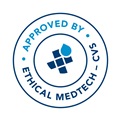
Natasha Mirza
University of Pennsylvania
USA
Title: IL-1 receptor antagonist inhibits granulation formation in the murine model of subglottic stenosis
Biography
Biography: Natasha Mirza
Abstract
Purpose: Using a functional model of airway granulation tissue in subglottic stenosis, we investigated changes in histopathology and inflammatory markers within granulation tissue in response to intraperitoneal IL-1 Receptor Antagonist (IL1RA) injections. Changes in inflammatory markers will allow us to further delineate the immune response to wound healing and to potentially identify treatment markers. Methods: Laryngotracheal complexes (LTCs) of donor mice underwent direct airway injury. LTCs were transplanted into subcutaneous tissue pockets in the backs of recipient mice in two groups: IL1RA-treated and untreated. The IL1RA-treated arm received daily intraperitoneal injection of IL1RA for three weeks. LTCs were then harvested. Granulation formation was measured. The mRNA expression of TGF-beta and IL-1 was quantified using RT-PCR with SYBR Green Assay. Results: At 3 weeks post-transplantation, there were statistically significant differences in observable lamina propria thickness between the treated and untreated mice. There were no statistically significant changes in mRNA expression of TGF-β and IL-1β within the IL-1 Receptor Antagonist treated arm as compared to the untreated arm. Conclusions: Using a previously described murine model, we begin to delineate inflammatory markers that can be targeted for potential therapy. While the lamina propria thickness shows that the effect of IL-1 has been inhibited, the levels of inflammatory markers do not change. This verifies that early use of the IL1RA will inhibit the efficacy of IL-1 in the inflammatory cascade and can prevent early granulation formation but does not affect the levels of inflammatory markers expressed in tissue

